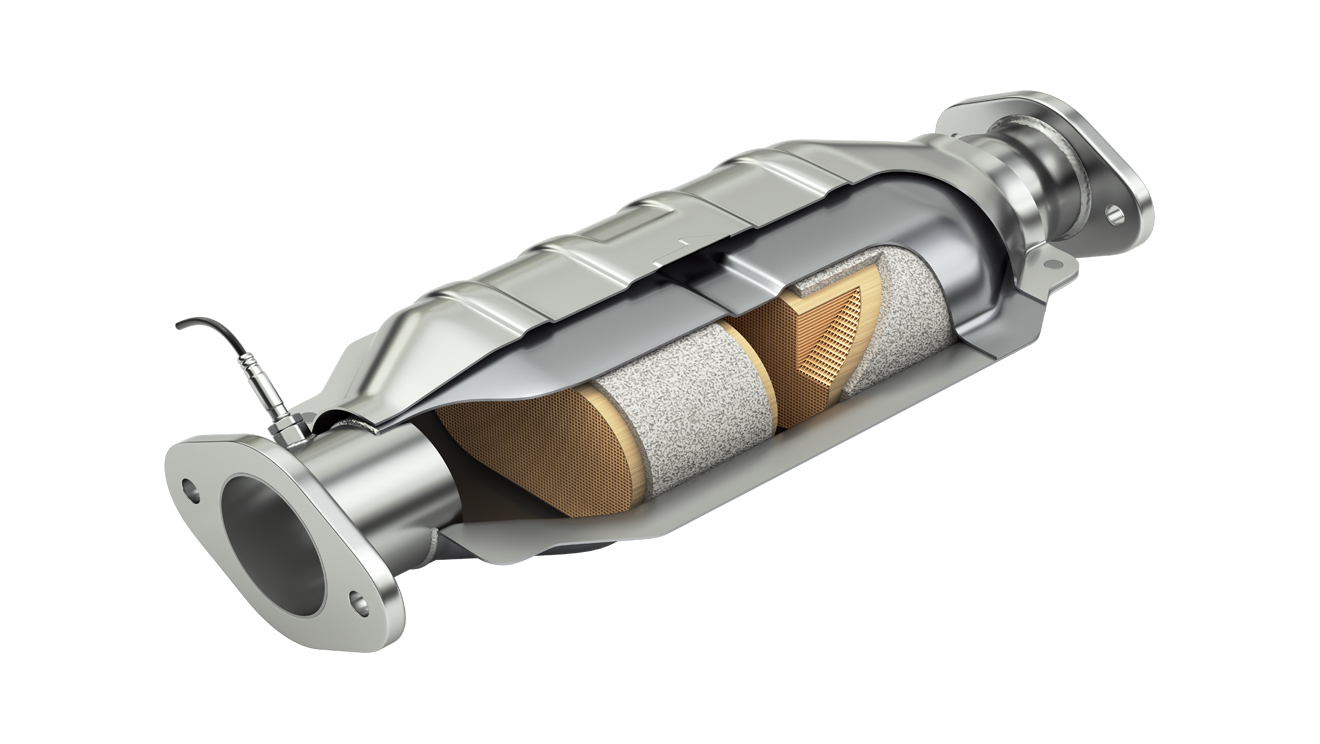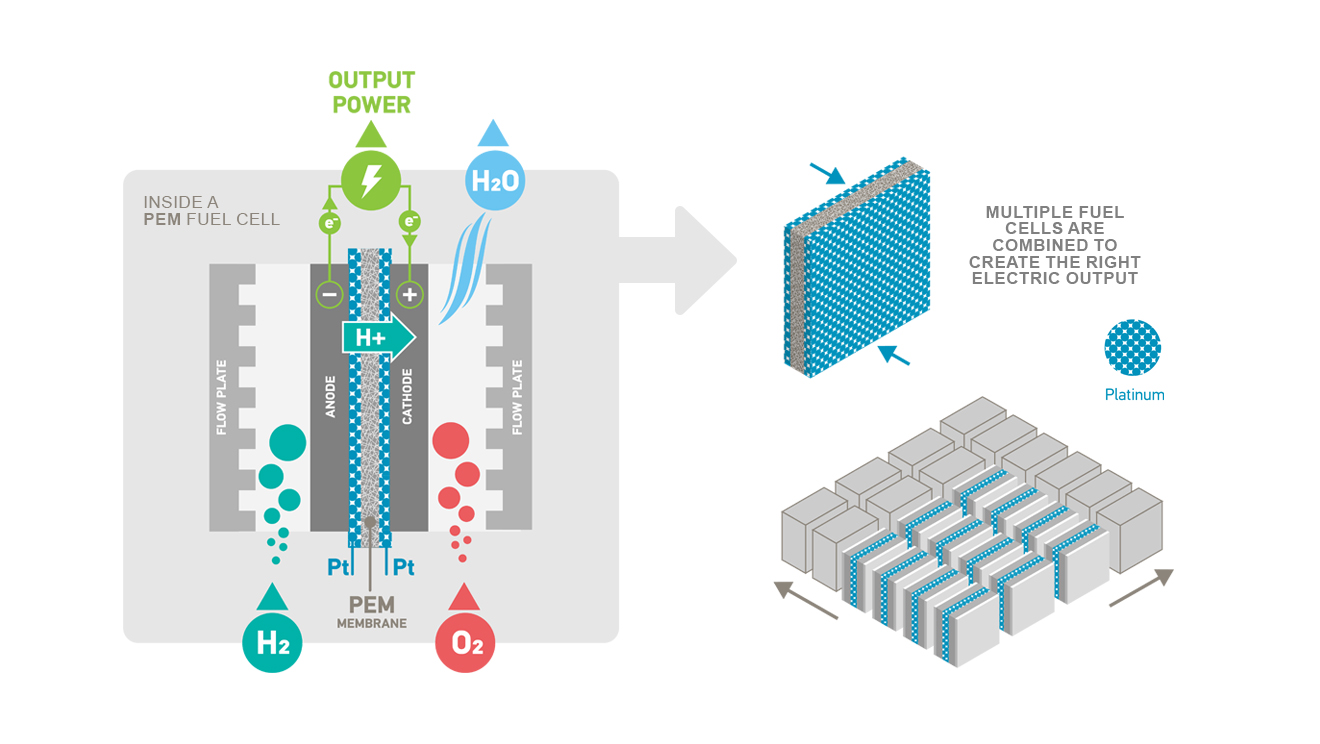How Platinum Supports Greener Transportation
- Aug 20, 2025
- lovePLATINUM
- 3 minute read
The information contained in this article is current as of the date of publishing.
Electric car sales worldwide have been on the rise, accounting for about 18% of cars sold worldwide in 2023.[1] While the consumer market has been dominated by battery electric vehicles, hydrogen-based fuel cell electric vehicles are gaining prominence, offering many of the range and reliability benefits of internal combustion without the carbon footprint.[2]
In this blog, we’ll look at the role platinum plays in enabling the transition away from internal combustion engines.


The information contained in this article is current as of the date of publishing.
Electric car sales worldwide have been on the rise, accounting for about 18% of cars sold worldwide in 2023.[1] While the consumer market has been dominated by battery electric vehicles, hydrogen-based fuel cell electric vehicles are gaining prominence, offering many of the range and reliability benefits of internal combustion without the carbon footprint.[2]
In this blog, we’ll look at the role platinum plays in enabling the transition away from internal combustion engines.
Platinum in Internal Combustion Engines
Starting in the United States in 1975, vehicles with internal combustion engines (ICEs) have been fitted with autocatalysts to reduce harmful emissions by converting exhaust pollutants into carbon dioxide, water and nitrogen.[3] While this still produces more emissions than electric vehicles, the global phase-out of ICE vehicles is expected to take decades, making it vital for the ICE-powered cars on the road now to be as carbon-efficient as possible.[4] Platinum (as well as other platinum group metals, particularly palladium) is a key element in this effort, serving as the catalyst that causes the conversion reaction without getting used up in the process.[5]
In addition to its role in reducing emissions from ICE vehicles, platinum contributes further to overall sustainability due to its recyclability. More than 90% of the platinum used for autocatalysts can typically be recycled, making it a significant supply that helps reduce the amount of new platinum needed.[6]

Platinum in fuel cells
Platinum is also used as a catalyst in proton exchange membrane (PEM) electrolysis, a technology for splitting water molecules to create hydrogen, which can be used as a low-carbon fuel source.[7] Platinum-based PEM electrolysis is more efficient and durable than other alternatives, such as alkaline electrolysis, helping reduce the cost of producing clean hydrogen.[8]
PEM fuel cells use the same principle in reverse, combining hydrogen and oxygen to produce electricity, with water and heat the only by-products.[9] Platinum is ideally suited for this application because it offers an optimal reaction rate and is stable enough to withstand the chemical and electrical environment of a fuel cell over the long term.[10] These fuel cells can be used to power electric vehicles, offering an effective alternative to both ICE and battery electric vehicles, as well as homes and businesses.[11],[12] PEM fuel cells also have the potential to support the broader shift toward renewable energy generation by enabling electricity to be stored as hydrogen.[13]

Enabling the shift to low-carbon energy
Platinum and other platinum group metals are critical to shifting the economy toward more low-carbon energy sources, particularly in the transportation sector. By making hydrogen-based fuel cell electric vehicles possible and limiting emissions from ICE vehicles, platinum has already played a significant role in enabling the sector overall to reduce its carbon footprint.
If you’re interested in adding platinum to your investment portfolio, talk to your financial advisor to determine the right strategy for you.
© 2025 Royal Canadian Mint. All rights reserved.
Disclaimers:
The links to websites and references to documents provided are available in English only and are owned or operated by third parties. By accessing a third-party website and/or document you understand that they are independent from the Royal Canadian Mint (the “Mint”) and that the Mint has no control over the content of such third-party websites and cannot assume any responsibility for materials created or published by such third-party websites. In addition, a link to a third-party’s website or document does not imply that the Mint endorses the website, the data, information and/or the content of such website. It is your responsibility to ensure that you review and agree to terms and conditions applicable to such websites before using it. Please note that the Mint is not responsible for webcasting or any other form of transmission received from any linked website.
The information provided herein is intended for informational purposes only and is not intended to constitute investment, financial, legal, tax or accounting advice, and you should not rely on the information herein for such advice. Past performance, and historical trends are not indicative of future results. Many factors unknown to the Mint may affect the applicability of any statement or comment made herein to your particular circumstances, and this information does not take into account any investment objectives, financial situation or particular needs of any particular person. You should directly consult your financial professional or other advisors before acting on any information herein. The information and materials herein are provided with the understanding that the Mint is not acting in a fiduciary capacity. Nothing contained herein constitutes a solicitation, recommendation or offer for the purchase or sale of products or services of any kind whatsoever. Diversification does not guarantee any investment returns and does not eliminate the risk of loss.
The information provided herein may contain forward-looking statements which are based on current expectations and are subject to change. Forward-looking statements involve significant known and unknown risks, uncertainties and assumptions. A number of factors could cause actual results, performance or achievements to be materially different from any future results, performance or achievements that may be expressed or implied by such forward-looking statements. These statements are not guarantees of future performance and should not be relied upon as such. The Mint assumes no responsibility for updating any information, including forward-looking statements, contained herein.
Mint does not guarantee the accuracy or completeness of any information contained herein, nor does the Mint accept responsibility for any losses or damages arising directly or indirectly from the use of or reliance on this information.
Reproduction or redistribution of any of this information is expressly prohibited without the prior written consent of the Mint.
Any person accessing this information should also consult the Mint’s website Terms of Use | The Royal Canadian Mint.
[1] IEA, 2024, Trends in Electric Cars.
[2] CME Group, 2022, Fuel Cell Electric Vehicles and Platinum Demand.
[3] World Platinum Investment Council, 2020, Platinum Group Metals in Autocatalysts.
[4] The Assay, The Case for Platinum.
[5] World Platinum Investment Council, 2020, Platinum Group Metals in Autocatalysts.
[6] CME Group, 2023, Platinum Recycling and the Circular Economy.
[7] International Energy Forum, 2023, Energy Transition to Trigger Huge Growth in Platinum for Hydrogen.
[8] International Energy Forum, 2023, Energy Transition to Trigger Huge Growth in Platinum for Hydrogen.
[9] Market News & Insights, 2023, Why Is Hydrogen an Important New Demand Segment for Platinum?
[10] Market News & Insights, 2023, Why Is Hydrogen an Important New Demand Segment for Platinum?
[11] Market News & Insights, 2023, Why Is Hydrogen an Important New Demand Segment for Platinum?
[12] CME Group, 2022, Fuel Cell Electric Vehicles and Platinum Demand.
[13] The Assay, The Case for Platinum.


Let's Talk Bullion
Let's Talk Bullion
Explore more articles and videos related to precious metals and get answers to questions about gold, silver and platinum bullion.



